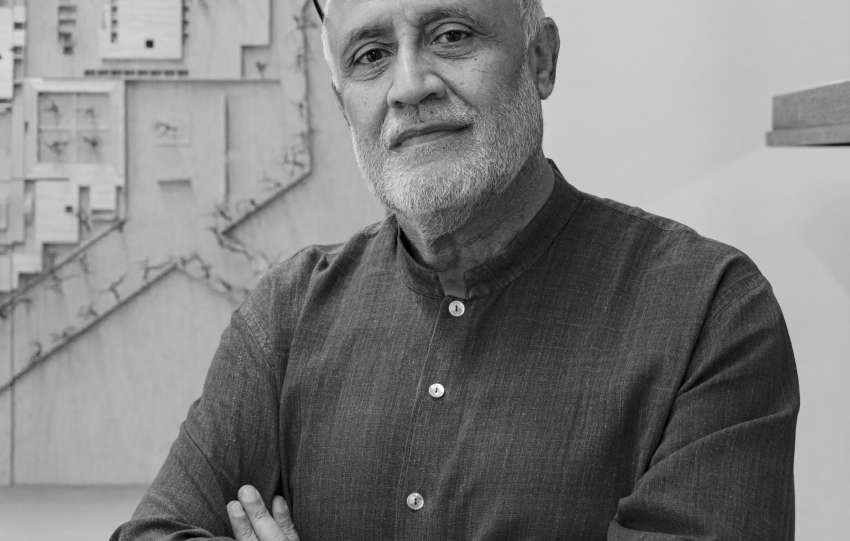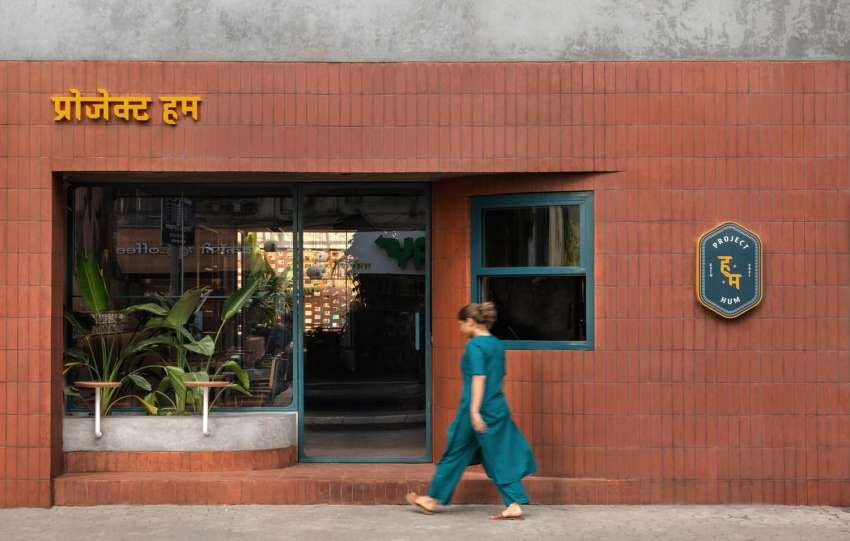Santiago Calatrava stands as one of the most recognizable figures in contemporary architecture and structural engineering. Known for his futuristic designs that merge the realms of sculpture and construction, Calatrava has left an indelible mark on skylines and cities around the globe. His works—often white, soaring, and skeletal—evoke motion, lightness, and organic forms, fusing technology with poetry.
From transportation hubs and cultural centers to bridges and museums, Calatrava’s designs are rooted in structural ingenuity and aesthetic ambition. His architecture challenges conventional boundaries, embodying both the solidity of engineering and the grace of art.
Early Life and Education
Santiago Calatrava was born on July 28, 1951, in Benimàmet, a suburb of Valencia, Spain. As a child, he showed a keen interest in drawing and sculpture, passions that would later intertwine deeply with his architectural pursuits.
After completing secondary school, Calatrava moved to Valencia School of Architecture, where he earned his degree in architecture in 1974. Not satisfied with the limitations of architectural education alone, he pursued civil engineering at the prestigious Swiss Federal Institute of Technology (ETH) in Zurich, obtaining his PhD in 1981. This dual training in architecture and engineering became the cornerstone of his career.
Unlike many architects, Calatrava’s understanding of structure is intimate—he doesn’t just imagine form; he calculates and constructs it, often working from kinetic sculptures and anatomical sketches that evolve into architectural visions.
Career and Architectural Philosophy
Calatrava’s career took off in the early 1980s with a series of bridge projects in Switzerland and Spain that showcased his unique aesthetic: part engineered precision, part organic abstraction. His early works were already marked by a sense of movement and lightness, even when rendered in concrete and steel.
He gained international fame in the 1990s, when cities around the world began to commission him to design landmark public structures, from transportation hubs to museums and civic buildings. Today, his offices in Zurich, New York, and Valencia handle projects across Europe, North America, and the Middle East.
Calatrava’s style is instantly recognizable. He frequently uses white concrete and steel, materials that reflect his fascination with classical purity and modern innovation. His buildings often resemble wings, spines, or skeletal forms, inspired by both the anatomy of the human body and natural phenomena like birds, trees, and waves.
A recurring idea in his work is dynamism—the architecture appears as if in motion, often with actual moving parts like operable roofs, tilting bridges, and retractable walls. He seeks to “humanize” technology, creating spaces that stir emotion while performing with structural elegance.
Signature Project: The City of Arts and Sciences, Valencia (1991–2009)
Among Santiago Calatrava’s most ambitious and iconic works is the City of Arts and Sciences (Ciudad de las Artes y las Ciencias) in his hometown of Valencia. This massive cultural and architectural complex, designed in collaboration with Félix Candela, is a celebration of science, art, and innovation—and a monument to Calatrava’s vision of architecture as immersive, expressive, and public.
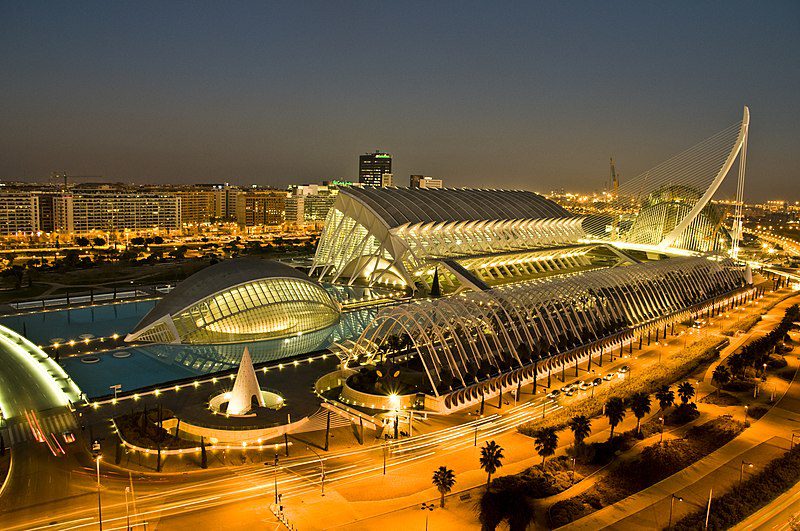
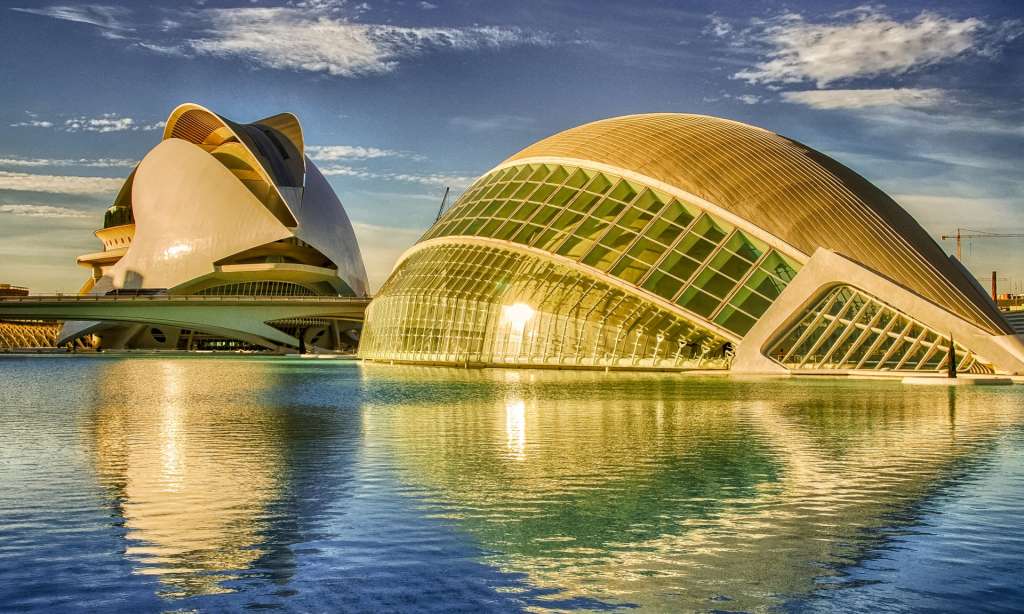
Context and Concept
Built on the former Turia River bed, the City of Arts and Sciences was conceived as a regeneration project for Valencia—a way to shift its industrial image toward a future of culture and creativity. The complex includes a planetarium, science museum, opera house, oceanographic park, and public plazas, all bound by landscaped gardens and reflecting pools.
Calatrava’s mission was not only to design buildings but to craft a visionary environment—one that would elevate everyday experience and bring people into contact with art, science, and nature in a single spatial narrative.

Architectural Highlights
The site includes several monumental structures designed by Calatrava:
- L’Hemisfèric (1998): A planetarium and IMAX cinema shaped like a giant eye, surrounded by a pool that reflects its curved lid and lashes. The movable “eyelid” roof opens and closes, reinforcing the metaphor of vision and knowledge.
- Museu de les Ciències Príncipe Felipe (2000): A science museum inspired by the form of a whale skeleton, with cantilevered balconies and vertical ribs creating dramatic shadows. Its interior is vast and column-free, encouraging flexible exhibitions and open learning environments.
- Palau de les Arts Reina Sofía (2005): A futuristic opera house resembling a ship or helmet, with dynamic curves, soaring terraces, and a sculptural steel “feather” that gives it the feel of flight.
- Assut de l’Or Bridge (2008): A white cable-stayed bridge spanning the Turia Gardens, featuring Calatrava’s signature harp-like array of cables and a sweeping, vertical pylon.
- L’Àgora (2009): A multifunctional space designed for concerts, exhibitions, and sporting events, with a tall, elliptical profile and retractable roof.
Impact and Reception
While the City of Arts and Sciences has drawn some criticism for budget overruns and maintenance challenges, it remains one of Spain’s most visited landmarks and a powerful symbol of Valencia’s cultural rebirth. Its visual language—a harmony of water, structure, and space—has inspired architects worldwide and become a key reference in discussions of starchitecture, public space, and interdisciplinary design.
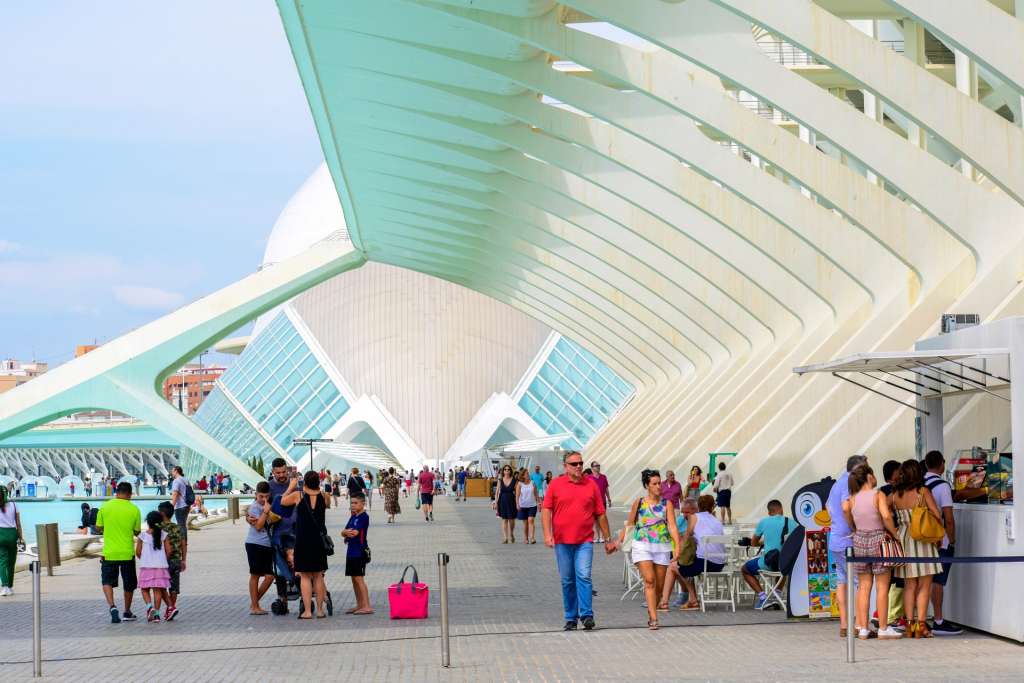
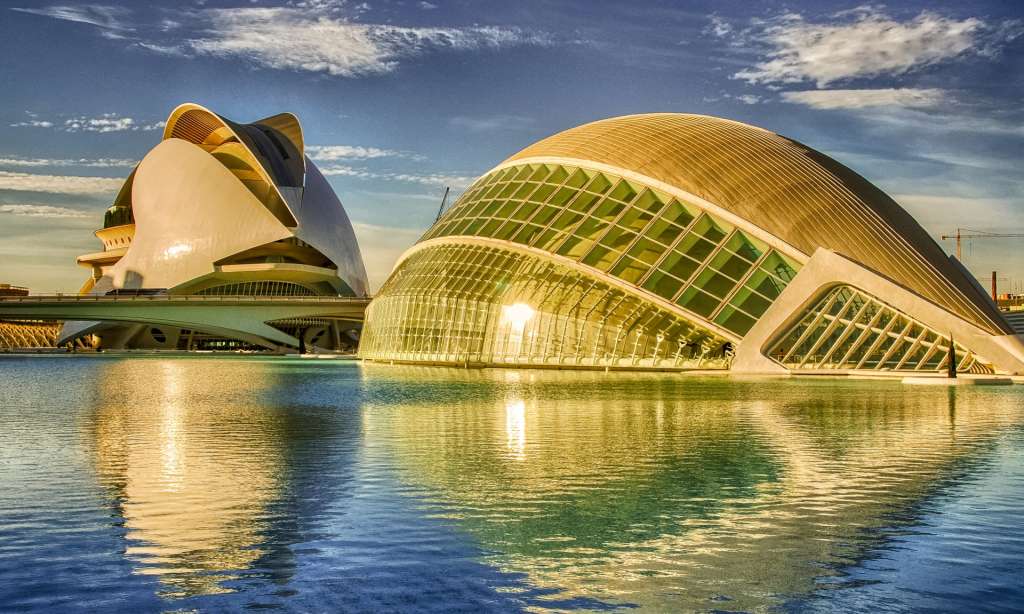
More than a collection of buildings, the complex is a living theater of architecture, where people walk, gather, and marvel. It captures Calatrava’s belief that architecture should uplift, dramatize, and express human aspiration.
Other Notable Works
Calatrava’s work spans continents and typologies. Some of his most prominent projects include:
- Turning Torso (Malmö, Sweden) – A twisting residential tower inspired by a human spine, symbolizing motion in verticality.
- Milwaukee Art Museum Expansion (Wisconsin, USA) – A stunning structure with a wing-like brise soleil that opens and closes with the sun’s path.
- World Trade Center Transportation Hub (New York, USA) – Nicknamed the “Oculus,” this transit station serves as a memorial and public space, with a soaring interior that evokes light and rebirth.
- Samuel Beckett Bridge (Dublin, Ireland) – A harp-shaped bridge that tilts to allow river traffic, echoing Ireland’s cultural icon.
Criticism and Controversy
While praised for his visionary designs, Calatrava has also faced criticism, particularly regarding cost overruns, delays, and maintenance issues on some of his large-scale projects. Cities like Valencia and Venice have raised concerns about practicality vs. aesthetics.
Still, even his critics acknowledge that Calatrava’s buildings are emotionally powerful and culturally significant. They are provocations, pushing the limits of what architecture can achieve—technically, symbolically, and experientially.
Awards and Recognition
Santiago Calatrava has received numerous prestigious honors, including:
- Gold Medal of the American Institute of Architects (AIA)
- Prince of Asturias Award for the Arts
- Royal Gold Medal from the Royal Institute of British Architects (RIBA)
He has also held professorships at MIT, Yale, and ETH Zurich, sharing his passion for structural expressionism and the convergence of disciplines.
Conclusion
Santiago Calatrava is not merely an architect or an engineer—he is a bridge-builder between art and science, between the practical and the poetic. His architecture challenges the ordinary, evoking flight, music, and anatomy in form and function.
Despite criticism, his influence is undeniable. He reminds the world that architecture can still dare to dream, to astonish, and to move the human spirit. In an increasingly mechanized world, Calatrava’s work speaks with emotion, elegance, and the enduring power of visionary design.


